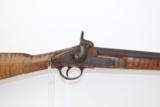 |
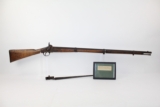 |
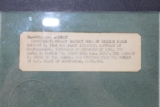 |
 |
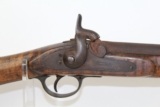 |
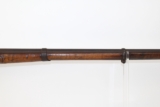 |
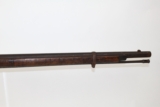 |
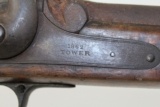 |
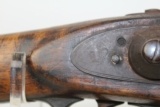 |
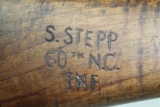 |
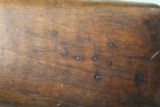 |
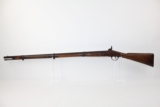 |
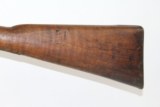 |
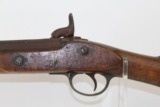 |
 |
 |
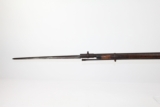 |
 |
 |
 |
 |

IDENTIFIED Civil War CONFEDERATE P1853 Musket
Guns International #: 101189661 Seller's Inventory #: 6196
Category: Civil War Rifles - Enfield Rifles
Seller's Information
When emailing or calling sellers direct, please mention that you saw their listing on GunsInternational.com
Seller: AncestryGunsLLC
Company: Ancestry Guns LLC
Member Since: 11/3/16
State: Missouri
Zip: 65203
Country: United States
Phone: (314) 707-7373
International Phone: 314-707-7373
Platinum Seller
Number of Active Listings: 1087
Total Number of Listings: 38245
Seller: FFL Dealer
Return Policy: 3 day inspection and return policy on used guns.
Payment Types Accepted: Credit Card, Certified Check, Money Order
Description:
IDENTIFIED Civil War CONFEDERATE P1853 Musket
60th North Carolina Infantry Inscribed Rifle
Here we present an antique Enfield Pattern 1853 Rifle-Musket, made in 1862 in England. This musket has been identified as one having been purchased by the Confederacy due to chronic arms shortages throughout the conflict. This one was issued to Stephen Stepp of the 60th North Carolina Infantry according to the graffiti carved into the right side of the butt stock. This musket was part of a collection displayed at the Grand Army of the Republic “Jesse Reno” Post #4 in Hagerstown, Maryland, and comes with its original identifier tag and description on a placard with the mark of the post embossed into it. The description goes on to credit O.T. Riley of Sharpsburg, Maryland for the acquisition of this musket from the family of William Magee. Oliver Thomas Riley (also variously spelled Reilly) lived on a farm in Keedysville as a child and witnessed the Battle of Antietam from a short distance. It became his lifelong passion and career to lead tours of the battlefield and to collect and sell pieces of history from his shop on Main Street in nearby Sharpsburg until his death in 1945. He was also the author of the book The Battle of Antietam.
William Magee, the soldier whose family credits with the original battlefield bring back of this musket, was a colorful fellow who has been studied in depth, to say the least. He was born to Irish immigrant parents sometime in the late 1840s and was in his early teens when he enlisted in the 33rd New Jersey Infantry, Company C (also known as the 2nd Zouaves), as a drummer boy. The 33rd left Newark by train on September 3, 1863 under the command of future Congressional Medal of Honor Recipient, Colonel George Washington Mindil. The regiment would first see combat at the Battle of Lookout Mountain. Two months later, Magee would be admitted to the Fort Rosecrans hospital at Murfreesboro, Tennessee, where he nearly died, but would recover in several months. Meanwhile, his regiment pressed the fight elsewhere. Separated from his original regiment, he was made an orderly to General Horatio Van Cleve after he convalesced. It was during this time that Confederate General Bate attacked the Union troops stationed at Murfreesboro in order to disrupt their supply lines and to draw attention away from Nashville. This is now known as the Battle of the Cedars and it was action in this battle for which William Magee would later be awarded his Medal of Honor (it was also the battle at which he acquired this very musket). His citation read “In a charge, was among the first to reach a battery of the enemy and, with one or two others, mounted the artillery horses and took two guns into the Union lines.” Various other accounts exist, one especially putting the still teen-aged drummer boy at the head of a charge consisting of a regiment of infantry! However, his actions were sharply denounced as a “fabrication” in 1878 when General Van Cleve sent a letter to pension attorney E.L. Campbell as Magee attempted to collect a pension for wounds from shell fragments and gunshot. Author Thomas Fox published a thorough historical investigation of this young hero in 2007 from which much of this material was used. It is Drummer Boy Willie Magee, Civil War Hero and Fraud. Credit also belongs to John Hartwell for his succinct telling of the story.
The right side of the butt is marked “S. STEPP/60TH NC/INF”. The lock is marked “1862/TOWER” with a Crown cipher. The collection tag is embossed with the Grand Army of the Republic “Jesse Reno” Post No. 4’s seal and reads “34-RIFLE AND BAYONET. CONFEDERATE MUSKET BROUGHT HOME BY WILLIAM MAGEE COMPANY C, 33RD NEW JERSEY INFANTRY. CAPTURED AT MURFREESBORO, TENNESSEE IN DECEMBER OF 1864. THE RIFLE IS MARKED “S. STEPP 60TH N.C. INF.”. THE BAYONET IS STUCK ON THE BARREL. WAS PROCURED FROM THE FAMILY BY O.T. RILEY OF SHARPSBURG, MARYLAND.” Included are National Park Service records for both Stephen Stepp and William Magee, confirming their service in their respective regiments and their presence at Murfreesboro.
The overall condition is good. The metal surfaces are dark with age. The markings are clear and legible. The bore is dark and untouched with visible rifling. The stock is in good shape, showing that it was well-used during its time in service. The action on this rifle is strong. Here is a wonderful piece of history that has been well documented.
Own the original! This is a legitimate antique and not a reproduction.
Barrel is 39-1/2 inches.
Caliber: .577
Overall condition as seen in photos.
Very Fast. Very Safe. FREE SHIPPING WORLDWIDE. Delivered directly to your door by express mail!
Guaranteed AUTHENTIC & Includes CERTIFICATE OF AUTHENTICITY.
ancestryguns
$8000
#6196
SOLD
Antique: Yes